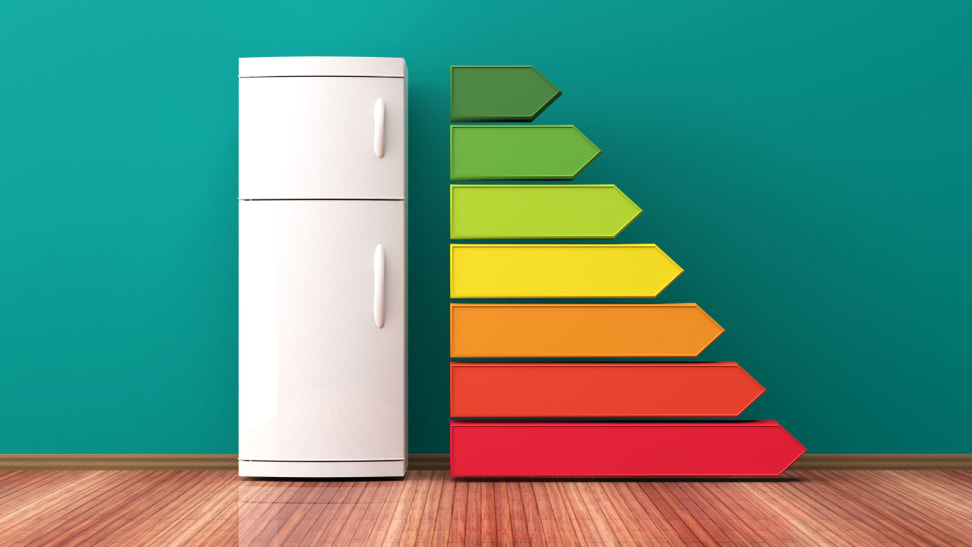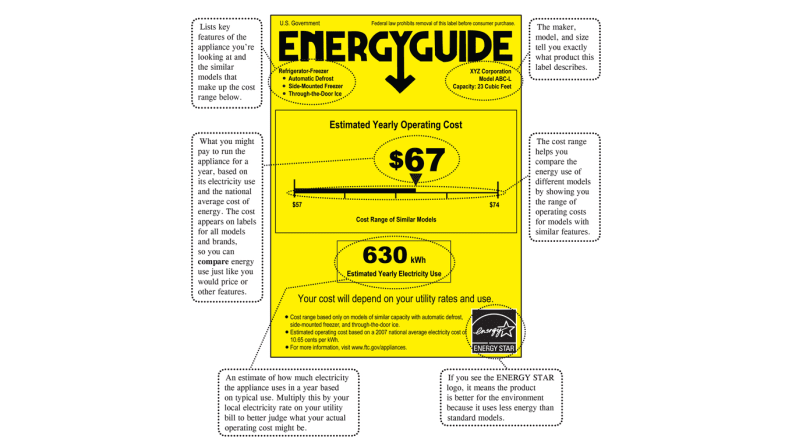Upgrading your refrigerator can save you money—here's how
A new fridge means less energy expenditure
 Credit:
Getty Images / george tsartsianidis
Credit:
Getty Images / george tsartsianidis
Recommendations are independently chosen by Reviewed's editors. Purchases made through the links below may earn us and our publishing partners a commission. Prices were accurate at the time this article was published but may change over time.
Refrigerator technology has made leaps and bounds over the past few decades. This is a good thing because, compared to other appliances, they’re more energy-intensive, typically consuming 7% of our residential power—and we can’t easily live without them.
According to Energy Star, old refrigerators use about 33% more energy than a newer model that's earned the Energy Star certification.
What is Energy Star?
Created in 1992 by the Environmental Protection Agency, Energy Star is a program that certifies energy-efficient products to cut down on power use and lower energy bills. The Energy Star program awards badges that make it easy for consumers to identify appliances that meet energy guidelines while rocking the modern features buyers want. If you can find an Energy Star-certified refrigerator you like, it will help you save money.
The most energy-efficient refrigerators

A top-freezer refrigerator is the most efficient style.
If you’re in the market for a new fridge, you may be surprised to learn that top-freezer models are the most energy-efficient. A top-freezer fridge can use less energy than a 60-watt light bulb.
An Energy Star–certified bottom-freezer model is behind the top-freezer style in energy use. Side-by-side models have a lot more surface to chill, so they consume more power. Don't forget that size matters, too, so a smaller side-by-side refrigerator can be more economical to run than a big top-freezer model.
If you want to research what models in particular are most deserving of your eco-minded purchasing power, Energy Star has released its 2021 picks for most efficient appliance in just about every category.
Why replace your refrigerator now?
If you have a refrigerator that’s more than 10 years old, it’s a good idea to swap it out for a new one—yes, even if your old one is still working. You’ll make an upfront investment in a new fridge, but energy costs will be significantly lower than those for your current fridge, and the savings will add up fast. Energy Star says that replacing an old fridge with a new one can save you more than $300 over the next five years.
The amount you save depends on the size, the style, and the features you want, so bear in mind that although ice-makers and through-the-door water dispensers seem indispensable, they are also costly to run. Constellation, an energy company that services consumers across the U.S. says these features can increase energy use by 14%-20%. This doesn’t mean you should go without ice, but it does mean you should balance your needs against your desire to save money.
Reading the EnergyGuide label

The EnergyGuide label shows you how much energy an appliance uses and makes it easier to compare the amount of energy used by similar models.
When you look at new refrigerators, you’ll notice a large yellow sticker showing the make, model, size, capacity, features, projected average electricity cost that's shown in a range for similar refrigerators, and possibly an Energy Star symbol that indicates this fridge conforms to energy-efficient guidelines. You should use the EnergyGuide label to compare the energy use on models you like to determine which is most efficient.
Refrigerator best practices

Cold air rushes out when the refrigerator door is open.
Whether or not you have an energy-efficient fridge, there are steps you can take every day to help your wallet. Here are some suggestions:
- Keep the door closed as much as possible: If you have a French-door fridge, open just one door at a time when you need to grab something.
- Install your refrigerator away from heat sources: It has to work harder if it’s close to your dishwasher or oven.
- Allow for airflow: When you measure for your new refrigerator, add an inch around the sides and the back.
- Try to only use one fridge: The Department of Energy reports that the number of homes with a second refrigerator has increased dramatically over the past 20 years. Although it may be convenient to have a second fridge in the garage, remember that one larger fridge uses less energy than two smaller ones.
The product experts at Reviewed have all your shopping needs covered. Follow Reviewed on Facebook, Twitter, and Instagram for the latest deals, product reviews, and more.
Prices were accurate at the time this article was published but may change over time.






